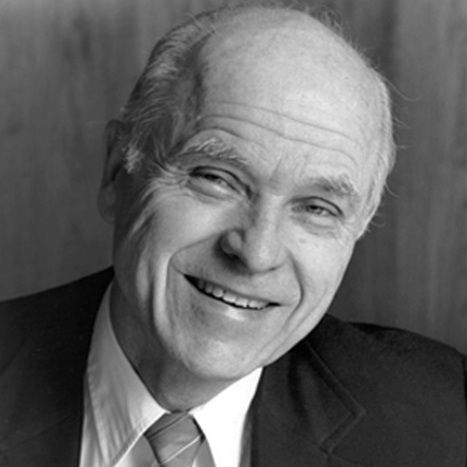Editorial Comment

Money and missions is the theme of most of our material this time, but a few minutes ago, when I took out the trash, I noticed that my right front tire was almost flat. I had to go to the garage and get out my seldom used, battery-operated tire pump. As I sat there on the grass watching this neat little engine make imperceptible progress pumping tiny puffs of air into an almost flat tire, I knew I was in for a few-minutes wait.
My thoughts drifted to the fax message that had just come in earlier today. It was a page from a well-known mission magazine.
There it was. One more of my friends had tossed in the towel about finishing the task by AD 2000. The reason was suspicious. We, too, may give up the goal one day, but not yet!
But why now are two of my friends the first to burst into print talking like this? Well, both of them are leaning on the same misleading statement I talked about last issue.
The stumbling block
You judge. Let me cite the provocative, misleading quote on which both of my friends are relying, because they are misreading still another friend of mine--David Barrett.
Barrett is as zealous as anyone to see big things done by AD 2000. But at times his eagerness to encourage greater effort leads in the direction of alarming people. (I used to do that, too.) His confusing quote is: "I just updated my 1990 list of least evangelized peoples. This list was totally unreached in 1974, totally unreached in 1989, and totally unreached today."
Wow! This list is the "least" reached out of a larger number of unreached groups. My friends have misinterpreted this statement.
My comment last time was, roughly: "To suppose that nothing has been done among any of the groups simply because nothing has been done within one sub-section is a serious flaw in logic."
Let's take an example. Suppose (I'm just guessing) there were 120 million smokers in America in 1974, and that this number dropped dramatically to 100 million today. An alarmist could still say (truthfully, but misleadingly) that "There were a certain 20 million really heavy smokers who had not stopped smoking in 1974, who still had not stopped smoking in 1989, and who are still smoking today in 1994." While such a statement could be true, it glosses over the fact that a total of 120 million smokers in 1974 declined to 100 million in twenty years. Sure, a certain 20 million have not stopped smoking, but 20 million have stopped! A LOT has been done!
To be specific
Those of you who want to look more closely at what can be done by the year 2000 need to know that the list ("2,000 least evangelized peoples") referred to by Barrett is unpublished. No one but the owner can verify it. Furthermore, the dozen or so criteria for what constitutes least evangelized are also unrevealed. The hundreds of knowledgeable mission leaders in the world today have no way to make sure new breakthroughs are recorded so as to affect this list.
Finally, the phrase, least evangelized, whatever its criteria, is a quite different concept from the phrase unreached. Unreached has a published definition, carefully arrived at in a two-day study conference of two dozen widely representative mission leaders (in March of 1982, a meeting sponsored by the Lausanne Committee and the then-called Evangelical Foreign Mission Association).
The phrase, a least evangelized people group, has multiple (unpublished) criteria, apparently having to do with degrees of exposure. The last time I saw the list of such groups, one of the groups already had thousands of churches and hundreds of thousands of fervent believers within it.
Thus, a group can be least evangelized and yet already reached, or a group can be unreached and yet already evangelized. How?
The phrase, an unreached people group, has only one criterion: Is there (or isn't there) within that group a viable, evangelizing, indigenous community of believers able to reach the rest of the group?
Also, a group that is unreached is like not yet pregnant. You can't, grammatically, say either slightly, or partially pregnant nor can you say totally pregnant. You CAN say, "clearly pregnant" or "possibly pregnant." Thus, the troublesome quote is not using technical terms when it says "totally unreached" or when it uses least evangelized and unreached synonymously.
The point is that years of effective progress can go on without a group finally attaining the "reached" status. But not quite arrived does NOT mean there is no progress at all.
What is "the task"?
Furthermore, to say "the task can't be completed" is meaningless unless you say what the task is. One of my good friends, Jim Montgomery, is out to plant 7 million churches. He was on our founding board. His marvelous ministry, DAWN (Discipling a Whole Nation), has a brilliant grasp of the local, practical goal of planting a church for every village or cluster of 500 or more people. DAWN now has a global network with committees on the country level which is setting out to do just that. That's why their goal is 7,000,000 churches. (We have been suggesting that even that huge a number means only one more church for each existing church. But Jim Montgomery has corrected us, and we need to speak of only 5 million existing Bible-studying churches.)
However, when I speak of "The Task," I prefer to speak of "people groups" and the remaining necessity for the cross-cultural missionary type of work to penetrate them. Thus, I am concerned about the number of peoples that have not yet been discipled--and I go along with the 1982 definition (see col. 3 on p. 4) of "reached/unreached peoples." This is the cross-cultural missionary task of penetrating every people group, not a task of ordinary evangelism. This point has been voiced since the 1980 World Consultation on Frontier Missions in Edinburgh as A Church for Every People by the Year 2000. Only when that goal is attained for a given people group, can we pursue the further goal added by the AD 2000 Movement: "and the Gospel for Every Person."
Therefore, we have always stressed that the first priority is the penetration of the sealed-off (unreached) peoples of the world. We would like to see all of them penetrated (reached). Now, that is a goal that is finishable by the year 2000.
We are getting closer. We may have to give this more specific missionary goal up, but it is much too soon to do so now!
Korea Countdown
We are approaching the global level AD 2000 Movement meeting in Korea next May 17-26. It will unquestionably be the most important strategic huddle before the end of the century. If you want to sense the momentum of faith and action behind it, check Luis Bush's two articles, pages 32 and 36.
Money and Missions
Probably the most important book ever written on this subject is Jonathon Bonk's book, Missions and Money. See the excerpt on page 22.
An Iranian Shocker
Judith Shadzi is an evangelical American happily married to an Iranian. Her new book, A Time for Peace between Muslims and the West, gives gripping, knowledgeable, and invaluable insight into Islam. And it gives informed yet shocking insight into the Iranian view of the United States--which armed Saddam Hussein as he killed hundreds of thousands of Iranians. Send $10 directly to Judith Shadzi, 10187 Byrne Ave, Cupertino CA 95014.
Transform Your Bible
Dr. David Filbeck's new Billy Graham Center Monograph is the most thorough-going presentation of the Bible as a missionary book ever written. Spectacular! Your Bible will never be the same. See the announcement on page 51.







comments